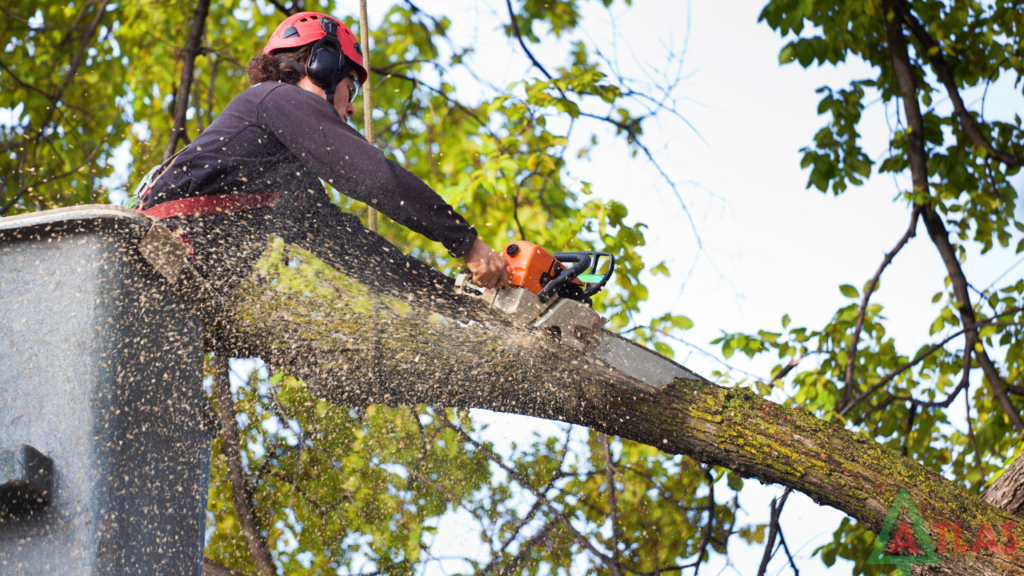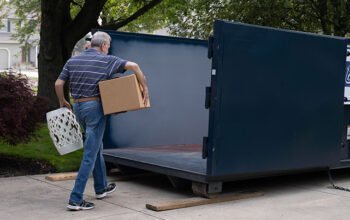Tree removal is often necessary to address safety concerns, especially when a tree poses a threat to people or property. Dead, diseased, or damaged trees can become unstable, increasing the risk of falling branches or even the entire tree. Such incidents can result in injuries to individuals or cause significant damage to buildings, vehicles, or other structures. Therefore, identifying and removing hazardous trees promptly is essential to mitigate these risks and ensure the safety of the surrounding area.
Why Tree Removal is Necessary
Tree Health Issues
In some cases, tree removal may be necessary to preserve the overall health and vitality of a landscape. Trees that are severely diseased or infested with pests may not respond effectively to treatment and can become a source of infection for nearby trees. Additionally, overcrowded or poorly spaced trees may compete for resources such as sunlight, water, and nutrients, leading to stunted growth and decline. Removing sick or overcrowded trees can improve the health and appearance of the remaining vegetation, promoting a more sustainable and vibrant ecosystem.
Property Damage Prevention
Tree removal is often necessary to prevent potential damage to property, including buildings, utility lines, and infrastructure. Overgrown trees with large branches or extensive root systems can encroach upon structures, causing structural damage or obstruction. Additionally, trees planted too close to buildings or underground utilities pose a risk of root intrusion, which can compromise foundations, pipes, or underground cables. By removing trees that pose a risk of damage, property owners can safeguard their investments and avoid costly repairs in the future.
Tree Removal Process
Initial Assessment
The tree removal process typically begins with a thorough assessment of the tree and its surroundings. This involves evaluating the tree’s health, structural integrity, and proximity to nearby structures or utility lines. Arborists or tree removal professionals may inspect the tree for signs of disease, decay, or pest infestation, as well as assess its overall stability and risk of failure. Additionally, factors such as the tree’s size, location, and accessibility will influence the removal method and equipment required for the job.
Obtaining Necessary Permits
Before initiating any tree removal activities, property owners must ensure compliance with local regulations and obtain any required permits or approvals. Depending on the jurisdiction and the tree’s location, certain restrictions or guidelines may apply to tree removal, especially for trees located in conservation areas, historic districts, or protected habitats. Failure to obtain the necessary permits could result in legal consequences, fines, or penalties, so it’s essential to consult with local authorities or arborists to navigate the permitting process effectively.
Selecting the Right Removal Method
Once the initial assessment is complete and permits are obtained, the next step is to determine the most appropriate removal method for the tree in question. The chosen method will depend on various factors, including the tree’s size, location, condition, and surrounding environment. Common tree removal techniques include traditional felling, sectional dismantling, and crane-assisted removal. Each method has its advantages and limitations, and experienced tree removal professionals will assess the situation to select the safest and most efficient approach.
Execution of Removal Process
With the removal method decided, trained arborists or tree removal specialists will proceed with the execution of the removal process. This typically involves safely dismantling the tree in sections, starting from the top and working downward. Specialized equipment such as chainsaws, ropes, rigging systems, and cranes may be used to ensure precise and controlled removal without causing damage to surrounding property or vegetation. Safety measures such as personal protective equipment (PPE) and site barricades are essential to minimize risks to workers and bystanders during the removal process.
Post-Removal Cleanup and Disposal
Once the tree has been successfully removed, the final step is to clean up the site and dispose of the debris responsibly. This may involve chipping the branches into mulch, cutting the trunk into manageable pieces for firewood or timber, or hauling away the debris for recycling or proper disposal. Thorough cleanup is essential to restore the site to its original condition and minimize any impact on the surrounding environment. Additionally, property owners should consider replanting trees or landscaping the area to maintain the ecological balance and aesthetic appeal of the landscape.
Hiring a Professional vs. DIY
Benefits of Hiring a Professional Tree Removal Service
Hiring a professional tree removal service offers several advantages over attempting to remove a tree yourself. First and foremost, trained arborists or tree removal specialists have the expertise, experience, and equipment necessary to safely and efficiently remove trees of all sizes and species. They understand the complexities of tree removal, including assessing risks, selecting appropriate removal methods, and ensuring compliance with safety standards and regulations. Additionally, professional tree removal companies carry liability insurance to protect against accidents or property damage during the removal process, providing peace of mind for property owners.
Risks and Challenges of DIY Tree Removal
While DIY tree removal may seem like a cost-effective option, it carries significant risks and challenges that can pose safety hazards and property damage. Without proper training and equipment, inexperienced individuals are more likely to make mistakes during the removal process, such as improper cutting techniques, inadequate support systems, or underestimating the weight and trajectory of falling limbs. These mistakes can result in serious injuries to the person attempting the removal, as well as damage to nearby structures, vehicles, or landscaping. Additionally, DIY tree removal may not be covered by insurance policies, leaving property owners liable for any accidents or damages that occur during the process. Therefore, it’s often safer and more practical to leave tree removal to the professionals who have the skills and resources to get the job done safely and effectively.
Environmental Impact
Importance of Considering Environmental Factors
When planning tree removal, it’s essential to consider the potential environmental impact of the action. Trees play a vital role in ecosystem health, providing habitat for wildlife, absorbing carbon dioxide, and stabilizing soil. Removing trees indiscriminately can disrupt these ecological processes and contribute to biodiversity loss, soil erosion, and climate change. Therefore, property owners should assess the ecological value of the tree being removed and explore alternative options such as pruning, transplanting, or selective harvesting to minimize negative impacts on the environment.
Proper Disposal Methods for Removed Trees
After a tree is removed, it’s crucial to dispose of the debris responsibly to minimize environmental harm. Depending on local regulations and available resources, options for tree debris disposal may include recycling, composting, or mulching the organic material. Wood from removed trees can be repurposed for lumber, firewood, or wood chips, reducing the need for harvesting timber from natural forests. Additionally, green waste recycling facilities can process tree debris into compost or biofuel, further reducing the environmental footprint of tree removal activities.
Replanting and Conservation Efforts
To offset the loss of trees due to removal, property owners can engage in replanting and conservation efforts to restore and enhance local ecosystems. Replanting native tree species in suitable locations can help maintain biodiversity, provide wildlife habitat, and improve air and water quality. Participating in community tree planting initiatives or supporting conservation organizations can also contribute to broader efforts to preserve and restore forests worldwide. By taking proactive steps to mitigate the environmental impact of tree removal, property owners can contribute to sustainable land management practices and ensure a greener, healthier planet for future generations.
Conclusion:
Proper tree removal is essential for maintaining safety, preserving tree health, and preventing property damage. By following the guidelines outlined in this article and seeking professional assistance when needed, property owners can ensure that tree removal is conducted safely, responsibly, and in accordance with environmental considerations. Remember, the health of our trees and the well-being of our surroundings are in our hands. Let’s work together to promote sustainable tree management practices and preserve the beauty of our natural landscapes for generations to come.




